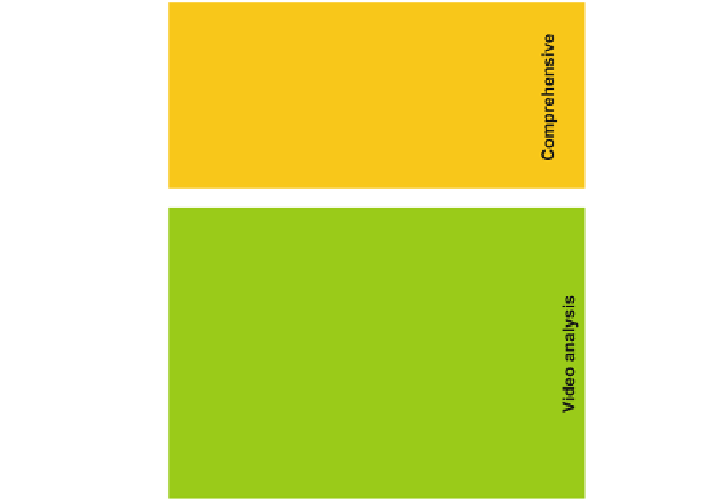Information Technology Reference
In-Depth Information
Fig. 12.2
Consecutive stages of video analysis presented as layered model
Although the multi-camera object tracking is, in most of the cases, not a simple
task, its completion may allow for a more in-depth analysis of monitored activities.
For example, the route of object movement can be obtained for the whole monitored
area, presenting a comprehensive overview of the incident. In order to accomplish
the multi-camera object tracking it is necessary to recognize the same objects in
images from separate cameras. This is not a trivial task due to changes in object
appearance between the cameras. Two views of the same object in two cameras
may differ in shape (because of different camera angles), colour (different light or
camera settings). Therefore, the task of object re-identification requires solving two
problems. First, a set of visual descriptors has to be selected in order to provide
a distinctive representation of objects appearance. Numerous descriptors related to
object shape, colour, texture, etc. are available and in order to perform an efficient
re-identification, a set of descriptors has to be selected so that it is possible to match
two views of the same object in two cameras and, at the same time, distinguish the
object from the others. The second problem is related to a method of testing the
similarity between sets of visual descriptors. This may be formulated as follows:
given a set of descriptors of each object collected from individual cameras and a
set of descriptors computed for an object that appeared in another camera, find a
best match of the descriptors. The matching procedure may be realized with trained
classifiers and a distance measure.

















































Search WWH ::

Custom Search